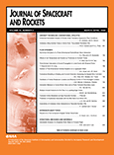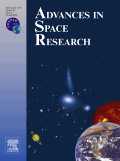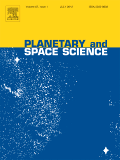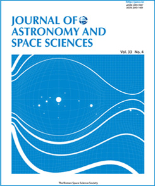
NPJ Microgravity
Scope & Guideline
Bridging Science and Society through Microgravity Insights
Introduction
Aims and Scopes
- Microgravity Effects on Biological Systems:
Research examining how microgravity influences cellular behavior, gene expression, and physiological changes in organisms, including humans, plants, and microbial systems. - Space Biotechnology and Engineering:
Studies focused on developing biotechnological applications and engineering solutions that utilize microgravity conditions for innovative research and product development. - Physical Sciences in Microgravity:
Investigations into the fundamental physical principles that govern material behavior in microgravity, including fluid dynamics, thermodynamics, and material science. - Health and Safety in Spaceflight:
Research addressing the health risks and countermeasures related to long-duration space missions, including studies on human physiology, medical practices, and psychological well-being. - Astrobiology and Extraterrestrial Life:
Explorations of biological processes in microgravity environments that may have implications for life beyond Earth, including studies on microbial life and plant growth in space.
Trending and Emerging
- Cellular and Molecular Responses to Microgravity:
An increasing number of studies focus on understanding the cellular and molecular mechanisms underlying the physiological changes induced by microgravity, particularly in human and model organism cells. - Artificial Gravity and Countermeasures:
Research exploring the use of artificial gravity and other countermeasures to mitigate the negative effects of microgravity on human health is gaining traction, reflecting a proactive approach to long-duration space missions. - Machine Learning and Data Analysis in Space Research:
The integration of machine learning techniques for data analysis in microgravity research is on the rise, indicating a trend towards using advanced computational methods to interpret complex biological and physical data. - Sustainable Space Exploration Technologies:
Emerging studies focus on developing sustainable technologies for long-term space exploration, including bioregenerative life support systems and in-situ resource utilization. - Neuro-ocular Health in Spaceflight:
Research addressing neuro-ocular health and associated syndromes in astronauts is increasingly prominent, highlighting the need to understand the effects of microgravity on vision and brain function.
Declining or Waning
- Traditional Physics Experiments:
Research involving basic physics experiments that do not significantly leverage the unique conditions of microgravity has decreased, as studies focus more on applications with direct relevance to biological or medical outcomes. - Spacecraft Design and Engineering:
Papers specifically related to spacecraft engineering and design have waned, possibly due to a shift towards more applied biological and medical research in microgravity. - Static Modeling Studies:
The frequency of static modeling studies that do not incorporate dynamic or interactive elements of microgravity environments has reduced, as the journal increasingly emphasizes experimental and innovative approaches.
Similar Journals

JOURNAL OF SPACECRAFT AND ROCKETS
Propelling Innovation in Aerospace Research.The Journal of Spacecraft and Rockets, published by the American Institute of Aeronautics and Astronautics, serves as a premier platform for disseminating cutting-edge research in the fields of aerospace engineering and space science. Established in 1964, this esteemed journal has evolved over nearly six decades, solidifying its reputation with a consistent publication history through 2024. With an impact factor positioning it within the Q2 quartile in both Aerospace Engineering and Space and Planetary Science categories, it ranks as a vital resource, featuring high-quality manuscripts that address the latest advancements and findings in spacecraft design, propulsion systems, and austere planetary exploration. The journal's rigorous peer-review process ensures that articles meet the high academic standards expected by practitioners in the aerospace sector. Researchers, engineers, and students alike will find the Journal of Spacecraft and Rockets to be an invaluable resource for both foundational knowledge and innovative research developments, advancing the future of aeronautics and astronautics.

Biology-Basel
Championing Open Access for a Sustainable Future in BiologyBiology-Basel is a premier, peer-reviewed open-access journal published by MDPI since 2012, situated in the heart of Switzerland. With an E-ISSN of 2079-7737, this journal serves as a vital platform for the dissemination of innovative research across the broad spectrum of Agricultural and Biological Sciences, Biochemistry, Genetics, Molecular Biology, and Immunology. Recognized for its rigorous editorial standards and impactful findings, it currently ranks Q1 in Agricultural and Biological Sciences and holds impressive positions in several categories according to the 2023 Scopus rankings. The journal’s open-access model ensures that high-quality research is freely available to a global audience, fostering collaboration and knowledge sharing among researchers, professionals, and students alike. Spanning from 2012 to 2024, Biology-Basel is committed to reflecting the latest advancements in biological sciences, making it an essential resource in the ever-evolving landscape of biological research.

ADVANCES IN SPACE RESEARCH
Where Groundbreaking Research Meets the Cosmos.ADVANCES IN SPACE RESEARCH, published by Elsevier Science Ltd, is a leading journal in the fields of Aerospace Engineering, Astronomy and Astrophysics, Atmospheric Science, and more. Since its inception in 1981, this journal has dedicated itself to the dissemination of high-quality research contributing to the understanding of space and planetary sciences through a multidisciplinary lens. With an impressive impact factor reflected in its positioning within the Q1 and Q2 quartiles across various categories, it serves as an essential resource for researchers and professionals alike. The journal's rigorous peer review process ensures that only the most relevant and groundbreaking studies are published, making it a cornerstone for those navigating the complexities of space research. The journal is accessible by subscription, inviting a global readership to engage with trailblazing research that influences future advancements and fosters collaborations across the scientific community. With a reputation for excellence, ADVANCES IN SPACE RESEARCH remains committed to pushing the boundaries of knowledge in the ever-evolving field of space exploration.

Advances in Astronomy and Space Physics
Exploring the Cosmos, One Discovery at a Time.Advances in Astronomy and Space Physics is an esteemed journal dedicated to the exploration and dissemination of research in the expansive fields of astronomy and space science. Published by Taras Shevchenko National University of Kyiv, this journal provides a platform for researchers, professionals, and students to share groundbreaking studies and innovations. With an ISSN of 2227-1481, it covers a wide range of subjects including astrophysics, planetary sciences, and space exploration technologies, thereby fostering interdisciplinary collaboration. Although not an Open Access journal, it maintains a commitment to high-quality, peer-reviewed content that contributes significantly to the advancement of scientific knowledge. The journal's mission is to promote sustainable practices in space research while also exploring the implications of discoveries on Earth and beyond. By maintaining rigorous publication standards, Advances in Astronomy and Space Physics aims to serve as a critical resource for those involved in the ever-evolving study of our universe.

PLANETARY AND SPACE SCIENCE
Charting New Frontiers: The Intersection of Space and Planetary SciencePLANETARY AND SPACE SCIENCE is a leading journal dedicated to the interdisciplinary field of astral studies, encompassing both planetary science and the exploration of space. Published by PERGAMON-ELSEVIER SCIENCE LTD in the United Kingdom, this journal has been pivotal since its inception in 1959, continually contributing to advancements in research about planetary bodies, their atmospheres, and the broader cosmic landscape. With an impressive impact factor, PLANETARY AND SPACE SCIENCE ranks in the second quartile of Astronomy and Astrophysics and the third quartile in Space and Planetary Science as of 2023, showcasing its scholarly significance. The journal aims to provide a platform for the dissemination of cutting-edge research, emphasizing the critical role of space exploration and planetary studies in understanding our universe. Researchers, professionals, and students alike are encouraged to explore the wealth of knowledge presented in its pages, fostering a deeper comprehension of the phenomena that shapes both our solar system and beyond.

International Journal of Microgravity Science and Application
Unlocking the Secrets of Microgravity PhenomenaInternational Journal of Microgravity Science and Application is a pivotal academic publication dedicated to advancing the understanding and applications of microgravity phenomena across a plethora of scientific disciplines. Published by the Japan Society for Microgravity Application, this journal serves as a vital platform for researchers and practitioners aiming to explore the complexities and unique opportunities presented by microgravity environments. While primarily focused on the fields of materials science, fluid dynamics, and biological studies under microgravity conditions, the journal fosters interdisciplinary discussions and innovative research endeavors that can translate into real-world applications and technological advancements. Despite its non-open access model, the journal continues to be an invaluable resource for those engaged in space research and microgravity applications, thus contributing significantly to the scientific community's understanding of these essential topics.

Journal of Astronomy and Space Sciences
Fostering Collaboration for a Deeper Cosmic Insight.The Journal of Astronomy and Space Sciences, published by the Korean Space Science Society, is a premier open-access platform dedicated to advancing the fields of astronomy, astrophysics, and space sciences. Established in 1984, the journal has been instrumental in disseminating high-quality research findings, fostering collaboration among scientists globally, and providing insights into the dynamics of our universe. With an ISSN of 2093-5587 and an E-ISSN of 2093-1409, the journal has gained notable recognition, currently ranking in the Q3 quartile in Earth and Planetary Sciences and Physics and Astronomy as of 2023. Although the journal's H-Index is currently unspecified, its commitment to rigorous peer-review processes and open-access availability ensures that groundbreaking research is accessible to a wide audience. Based in Seoul, South Korea, the journal is poised to continue supporting innovative research through 2024 and beyond. Researchers, professionals, and students alike will find valuable resources and opportunities within its pages, further establishing this journal as a crucial resource in the exploration of the cosmos.

CEAS Space Journal
Transforming aerospace innovation through scholarly excellence.CEAS Space Journal, published by SPRINGER WIEN, serves as a critical platform for advancing knowledge in the fields of aerospace engineering and space science. With an ISSN of 1868-2502 and an E-ISSN of 1868-2510, this journal has been at the forefront of scholarly communication since its inception in 2011, showcasing cutting-edge research that spans to the present day (2024). The journal holds a solid reputation, ranking in the Q2 quartile for Aerospace Engineering and Q3 for Space and Planetary Science as of 2023, illustrating its impactful contributions within these disciplines. Scopus rankings further underline its prominence, placing it in the 70th percentile among aerospace engineering journals. Although it is not an open access publication, the insights published in the CEAS Space Journal are invaluable for researchers, professionals, and students alike, providing essential studies and reviews that push the boundaries of aerospace innovation and planetary exploration. The journal's commitment to quality and rigor makes it an indispensable resource for anyone looking to deepen their understanding of contemporary challenges and technological advancements in space science.

Frontiers in Astronomy and Space Sciences
Innovating Research to Expand Our Celestial UnderstandingFrontiers in Astronomy and Space Sciences is a leading open access journal published by FRONTIERS MEDIA SA, based in Switzerland. Since its inception in 2015, this journal has provided a dynamic platform for researchers, professionals, and students to disseminate their findings across a wide spectrum of topics within the field of astronomy and astrophysics. With an impressive 2023 Impact Factor reflecting its relevance and contribution to the scientific community, it ranks in the Q2 category in Astronomy and Astrophysics, demonstrating a solid reputation among peers. The journal's commitment to open access ensures that all published research is freely available, fostering greater collaboration and knowledge sharing among astronomers worldwide. With a diverse range of articles spanning from theoretical investigations to observational studies, Frontiers in Astronomy and Space Sciences is an essential resource for anyone seeking to explore the wonders of the universe and share innovative ideas that push the boundaries of our understanding.

Solar-Terrestrial Physics
Fostering Global Dialogue on Atmospheric and Space SciencesSolar-Terrestrial Physics is a pivotal Open Access journal dedicated to advancing the understanding of the complex interactions between solar and terrestrial phenomena. Published by the NAUCNO-IZDATELSKIJ CENTR INFRAM in the Russian Federation, this journal has established itself as a significant platform for disseminating cutting-edge research within the fields of Atmospheric Science, Geophysics, and Space and Planetary Science. Since its transition to Open Access in 2017, it has bolstered academic accessibility, fostering the dissemination of knowledge to a global audience. With its current category quartiles ranking Q4 in Atmospheric Science and Q3 in both Geophysics and Space and Planetary Science, it actively contributes to the scholarly dialogue essential for innovation and research development. Researchers and practitioners can submit their work with ease, knowing their contributions will reach an engaged audience. The journal is an essential resource for those focused on exploring the dynamics of solar-terrestrial relationships, critical for understanding broader planetary systems.